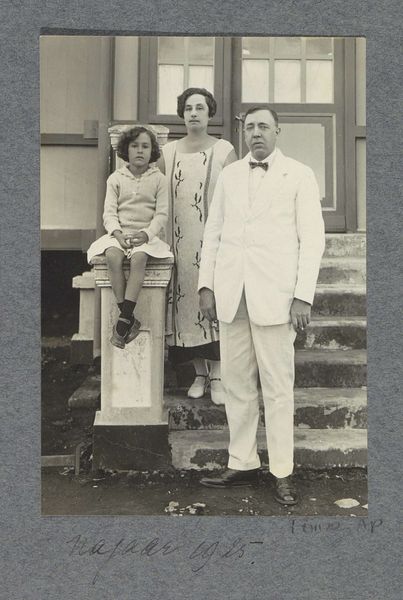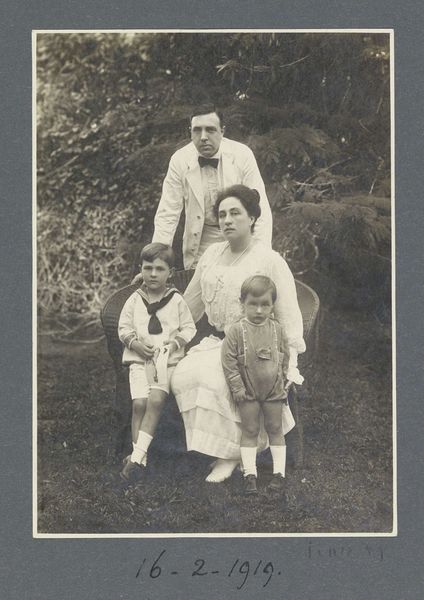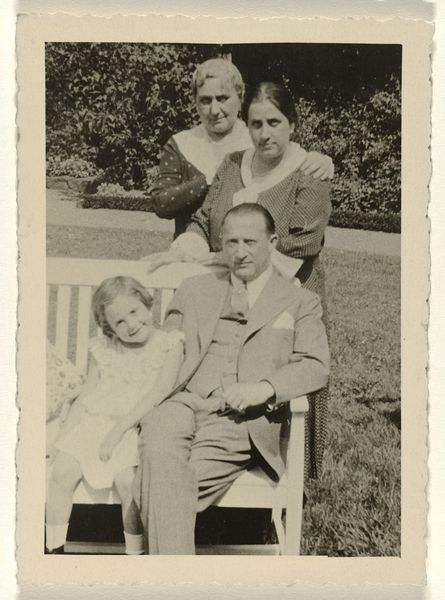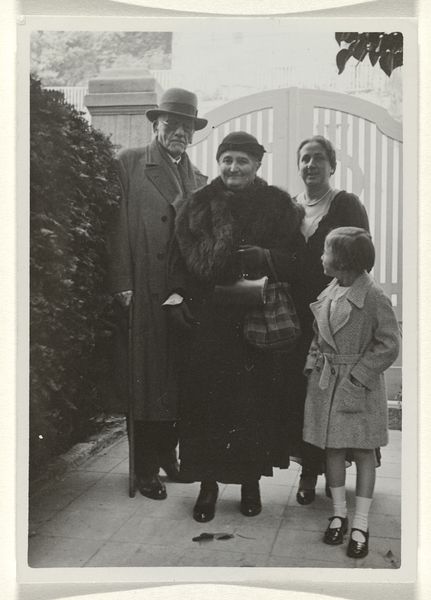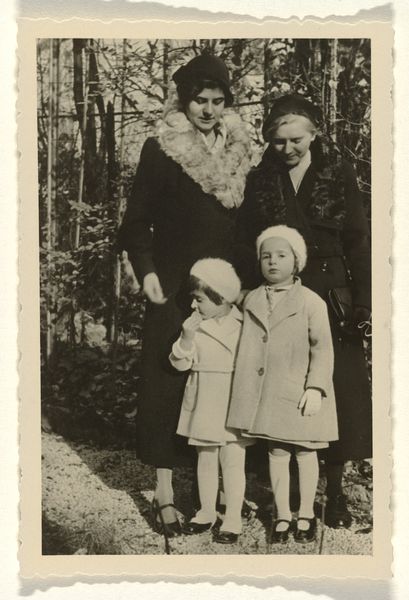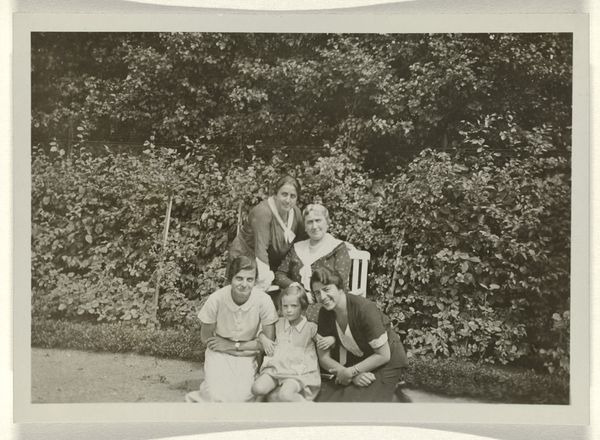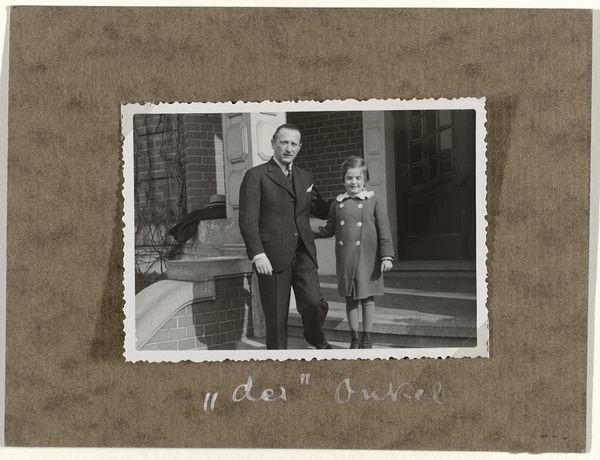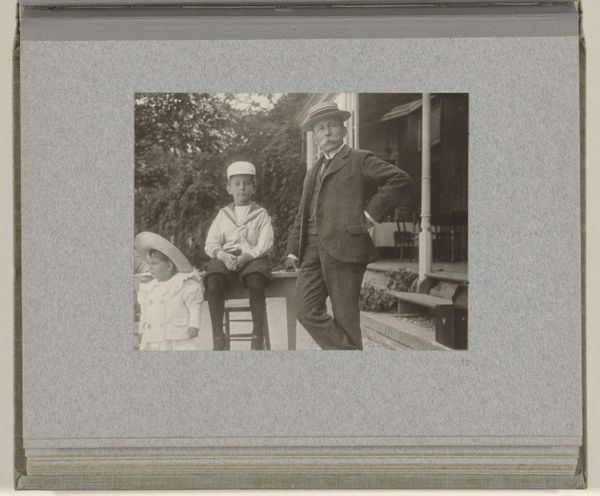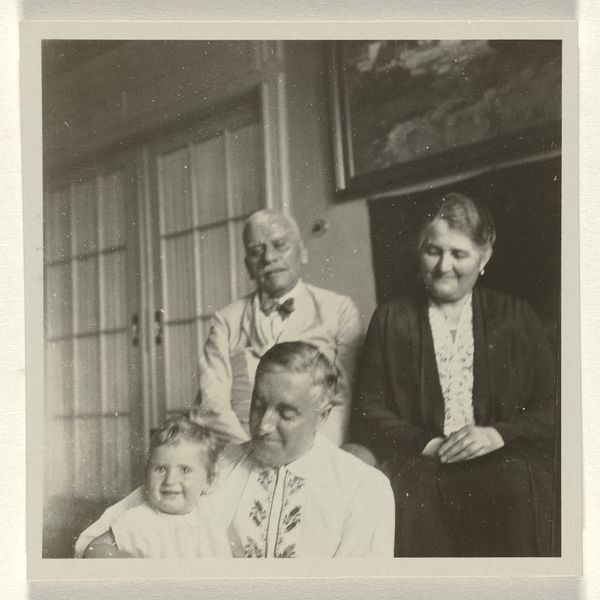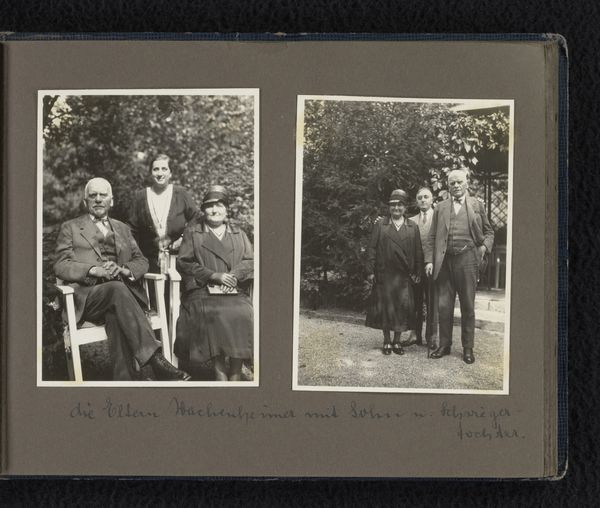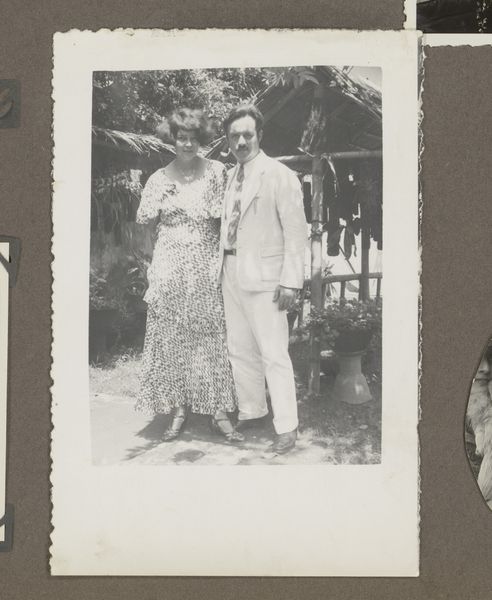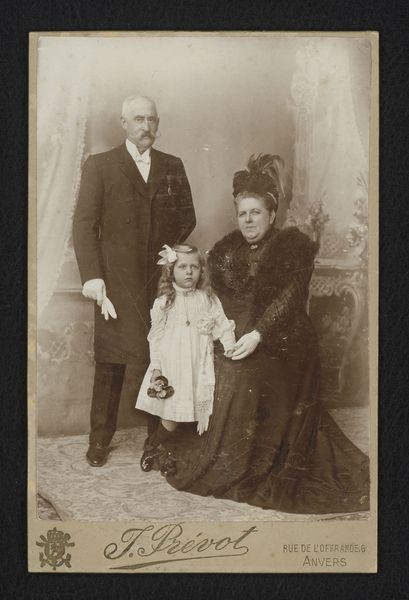
Meir Wachenheimer, Mathilde Wachenheimer-Wertheimer, Eugen Wachenheimer, Josefine Moos-Levi, Isabel Wachenheimer in tuin in Stuttgart, 6 tot 13 september 1930 Possibly 1930 - 1939
0:00
0:00
photography, gelatin-silver-print
#
photography
#
group-portraits
#
gelatin-silver-print
#
genre-painting
#
realism
Dimensions: height 60 mm, width 60 mm
Copyright: Rijks Museum: Open Domain
Editor: Here we have a black and white gelatin-silver print, likely from between 1930 and 1939, titled "Meir Wachenheimer, Mathilde Wachenheimer-Wertheimer, Eugen Wachenheimer, Josefine Moos-Levi, Isabel Wachenheimer in tuin in Stuttgart." It depicts a family grouping. I am immediately struck by the materiality, the paper and photographic process. How do you interpret the photograph, given its production context? Curator: I see here the physical record of a family. It’s tempting to view this merely as a document, but look closer at the medium. The gelatin silver print wasn’t just the standard of family photos. It became increasingly industrialised in its production during this era. Mass produced photography granted wider societal reach, capturing family narratives beyond those who could afford it prior. Editor: So the technology of the medium shaped who and what got documented? Curator: Precisely. The rise of gelatin silver prints mirrors larger economic shifts, an industrial revolution shaping what materials are accessible. Consider the availability and cost of this form versus earlier photographic processes. What does that say about who had access to image making and its societal reflection at the time? It impacts who makes and views. Editor: That is a really interesting idea. I’d never considered photography as connected to larger production trends like that. Curator: Reflect on what gets omitted or included based on industrial production's reach. Understanding the material components highlights its impact on the artwork. It shapes not just art, but entire socio-economic systems. The paper source, the gelatin chemistry... each informs our reading. Editor: That shifts how I think about art history in general! Thank you for highlighting this aspect, Curator. Curator: Absolutely. Considering materiality bridges aesthetic understanding and economic forces within art history itself. It deepens interpretation across many different artistic genres.
Comments
No comments
Be the first to comment and join the conversation on the ultimate creative platform.

